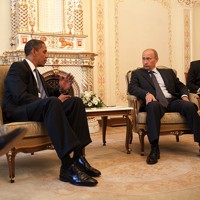There are two simultaneous and contradictory trends occurring right now in the international system. The first is the diffusion of power, as reflected by the displacement of the old Group of Seven, which at its founding in the 1970s comprised the bulk of the world’s productive capacity, by the Group of 20, where there is no longer one dominant power capable of driving the global agenda. The second is the reality that the United States still far outstrips any other one state or group of states in terms of capabilities, ranging from the power of its currency to its ability to project military force to any corner of the globe.
The result has been a growing “trust deficit” between the United States and several of the rising and resurgent powers, such as Russia and China, which in turn has had an impact on the latter states’ willingness to work with Washington to address major international challenges, such as in Syria and Iran.
The recent jeremiads about American decline notwithstanding, the United States still holds the bulk of the world’s political, economic and military power. As a result, other countries remain focused on finding ways to limit how Washington deploys that power. In a recent monograph on arms control, Paul Saunders of the Center for the National Interest notes how “the asymmetries between America’s global capabilities and ambitions and Russia’s more limited options and aims” produce continued uneasiness in Moscow, something that was quite evident to me during the recent sessions of the Dartmouth Dialogue on U.S.-Russia relations, held in Valdai, Russia.

